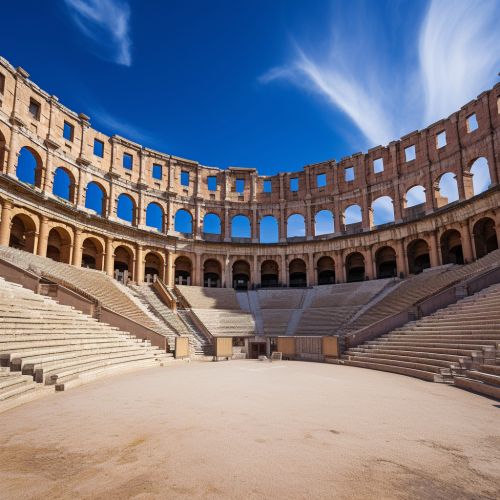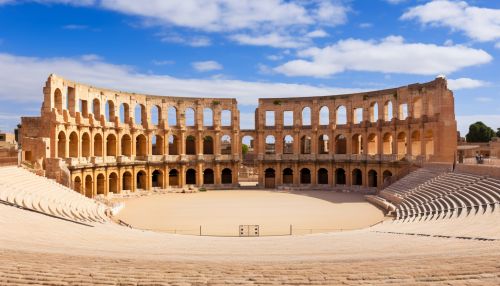Amphitheatre of El Jem
Overview
The Amphitheatre of El Jem is a well-preserved Roman amphitheatre located in the modern-day town of El Jem, Tunisia. It is one of the best preserved Roman structures in Africa and is a significant example of Roman architecture and engineering. The amphitheatre was built around the early 3rd century AD and could seat approximately 35,000 spectators.


History
The amphitheatre was constructed under the reign of the Roman Emperor Gordian III, during a period of relative peace and prosperity in the Roman Empire. The amphitheatre was primarily used for gladiatorial contests, animal hunts, and public spectacles such as mock sea battles. It served as a central hub for entertainment and social gatherings in the region.
Architecture
The Amphitheatre of El Jem is an elliptical structure measuring approximately 148 meters in length and 122 meters in width. The outer wall of the amphitheatre is built from large blocks of stone, while the inner wall and the arena floor are constructed from a mixture of stone and concrete. The amphitheatre features a complex system of underground passages and rooms, which were used to house animals and gladiators before their performances.
Preservation and Modern Use
The amphitheatre remained in use until the 7th century AD, when it was converted into a fortress during the Islamic conquest of North Africa. In the centuries that followed, the amphitheatre suffered from neglect and was partially dismantled for building materials. However, a significant portion of the structure remains intact today, and it is a popular tourist attraction and a venue for concerts and other cultural events.
